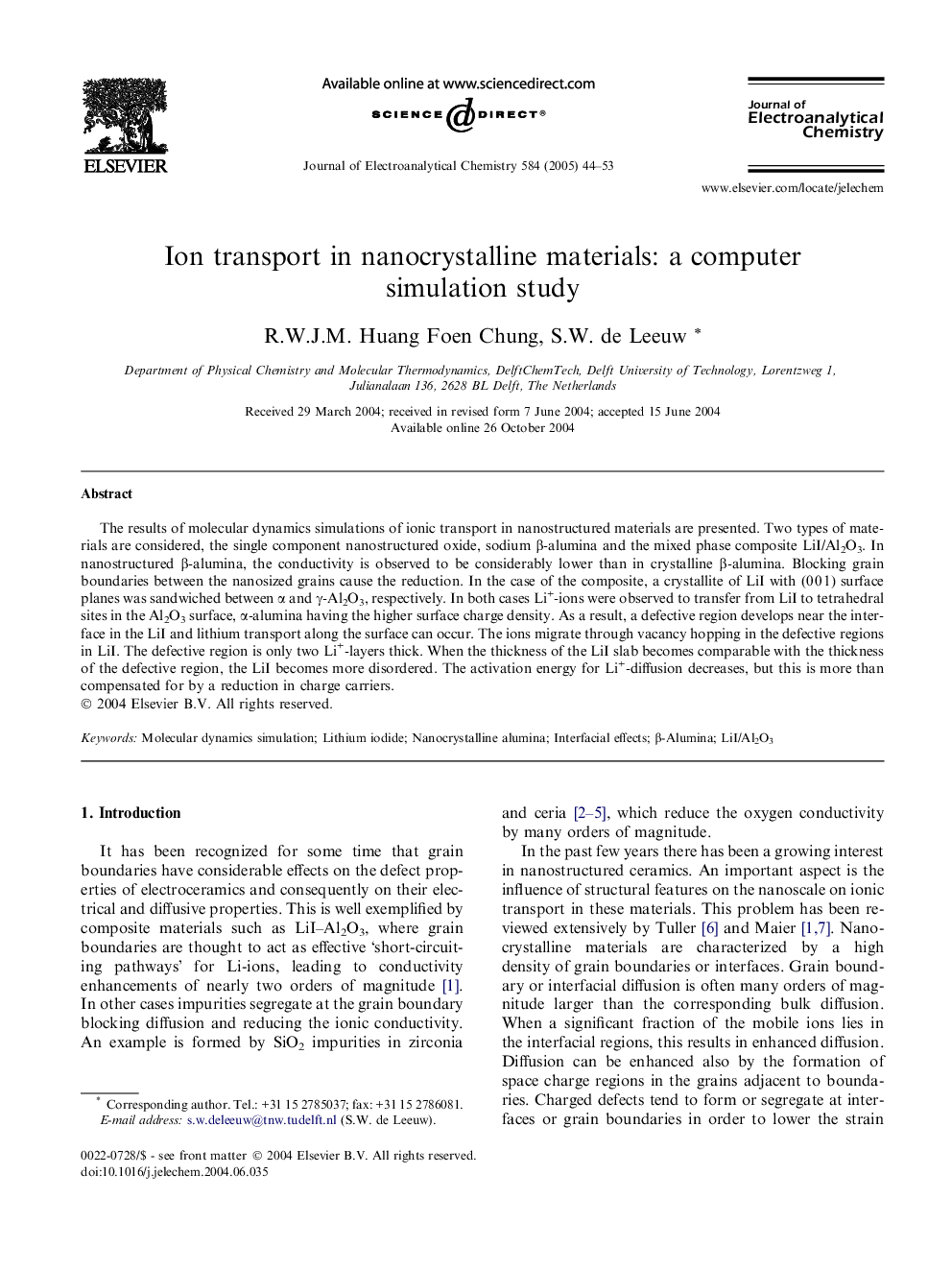| Article ID | Journal | Published Year | Pages | File Type |
|---|---|---|---|---|
| 10275784 | Journal of Electroanalytical Chemistry | 2005 | 10 Pages |
Abstract
The results of molecular dynamics simulations of ionic transport in nanostructured materials are presented. Two types of materials are considered, the single component nanostructured oxide, sodium β-alumina and the mixed phase composite LiI/Al2O3. In nanostructured β-alumina, the conductivity is observed to be considerably lower than in crystalline β-alumina. Blocking grain boundaries between the nanosized grains cause the reduction. In the case of the composite, a crystallite of LiI with (0 0 1) surface planes was sandwiched between α and γ-Al2O3, respectively. In both cases Li+-ions were observed to transfer from LiI to tetrahedral sites in the Al2O3 surface, α-alumina having the higher surface charge density. As a result, a defective region develops near the interface in the LiI and lithium transport along the surface can occur. The ions migrate through vacancy hopping in the defective regions in LiI. The defective region is only two Li+-layers thick. When the thickness of the LiI slab becomes comparable with the thickness of the defective region, the LiI becomes more disordered. The activation energy for Li+-diffusion decreases, but this is more than compensated for by a reduction in charge carriers.
Keywords
Related Topics
Physical Sciences and Engineering
Chemical Engineering
Chemical Engineering (General)
Authors
R.W.J.M. Huang Foen Chung, S.W. de Leeuw,
